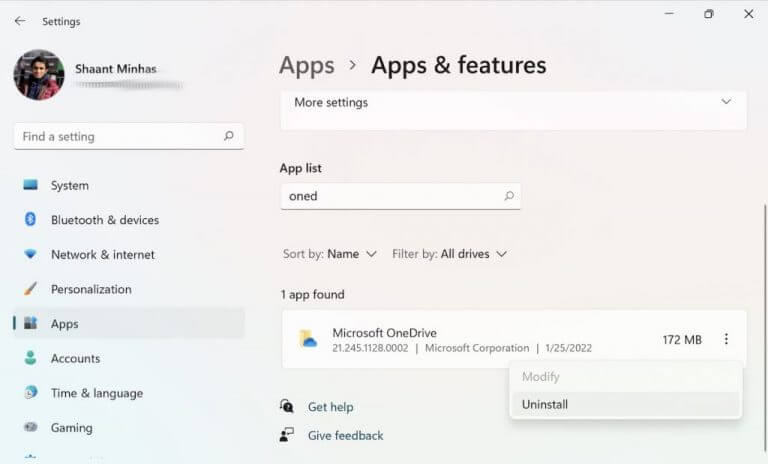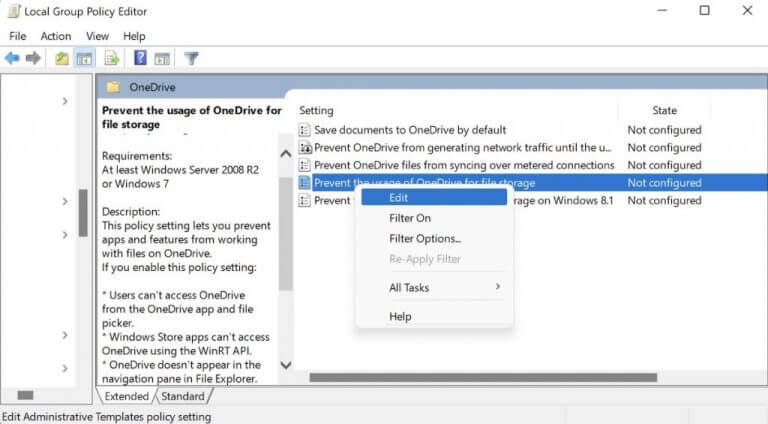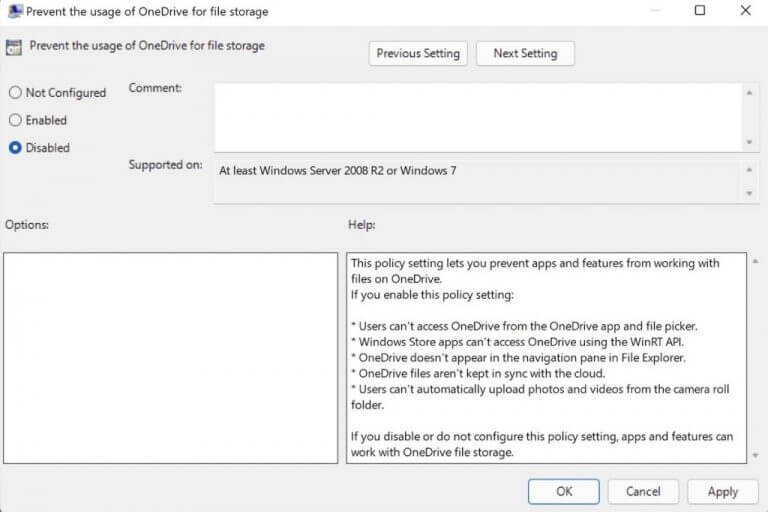The OneDrive app comes pre-installed in the Windows operating system due to the ease it provides in storing your data on the cloud. But OneDrive has its drawbacks; it might constantly pop up asking you to back up your data online, or eat away unnecessary memory from your PC— which is all the more annoying if you aren't using it.
So if you really don't want to keep OneDrive on your PC any longer, you should consider removing it. Another thing to keep in mind is that even if you get rid of the OneDrive app, some of its files will still sit steady on your File Explorer. Therefore, if you're looking to truly remove it from your PC, including from the File Explorer, follow the methods below to get started.
1. How to remove OneDrive from file explorer using Windows Settings
Removing OneDrive from your Windows has become as easy as any other program. However, keep in mind that when you uninstall the OneDrive app, your other apps will remain intact.
So you can remove the app without any worries of losing your data. Here’s how you can get started:
- Go to the Start menu search bar, type in ‘programs,’ and select Add or remove programs.
- Find Microsoft OneDrive under the App & features tag and click on Uninstall. When you’re asked for a password or a confirmation, enter them, and proceed with the uninstallation.

Your OneDrive application will be uninstalled in just a few seconds. But here's the caveat: even when you've removed the OneDrive app, its folders (although empty) will remain in the File Explorer. To remove the OneDrive app completely, follow the steps below:
Note: The above method is only works with people using Windows Home edition. So if you’re using the Professional, Enterprise, or Education version of Windows, then you need to use the Group Policy Editor for achieving the same thing.
Remove OneDrive using Group Policy Editor
The Group Policy Editor is a Windows tool that can be used for controlling and managing different aspects of a Windows account. To get rid of OneDrive with Group Policy Editor, follow the steps below:
- Go to the Start menu search bar, type in ‘group policy editor,’ and select the Best match.
- The policy editor will be launched. Select Computer Configuration > Administrative Templates.
- Click on Windows Components > OneDrive.
Right-click on the “Prevent the usage of OneDrive for file storage” policy setting option in the right pane, set it to “Disabled,” and click on OK.


As soon as you do, the OneDrive app will be disabled from your PC. Moreover, it'll also become inaccessible from the File Explorer, rather than the case when you do a simple uninstallation.
Removing OneDrive from file explorer in Windows 10 or Windows 11
OneDrive is a handy tool to store your files in the cloud. But it doesn’t fit everyone’s liking. We hope either of these methods helped you remove OneDrive from your Windows 10 or Windows 11 File Explorer.
Share This Post:
"explorer" - Google News
January 25, 2022 at 09:20PM
https://ift.tt/3G1tEgq
How to remove OneDrive from file explorer in Windows 10 or Windows 11 - OnMSFT.com
"explorer" - Google News
https://ift.tt/2zIjLrm
Bagikan Berita Ini














0 Response to "How to remove OneDrive from file explorer in Windows 10 or Windows 11 - OnMSFT.com"
Post a Comment